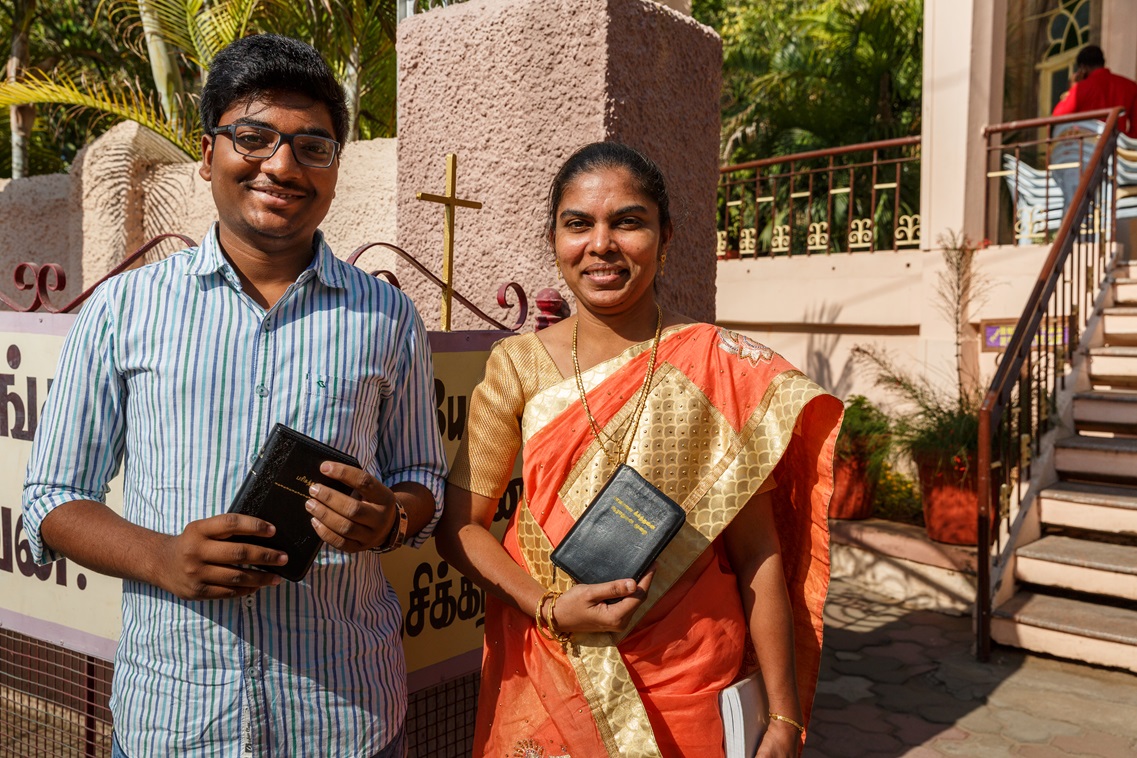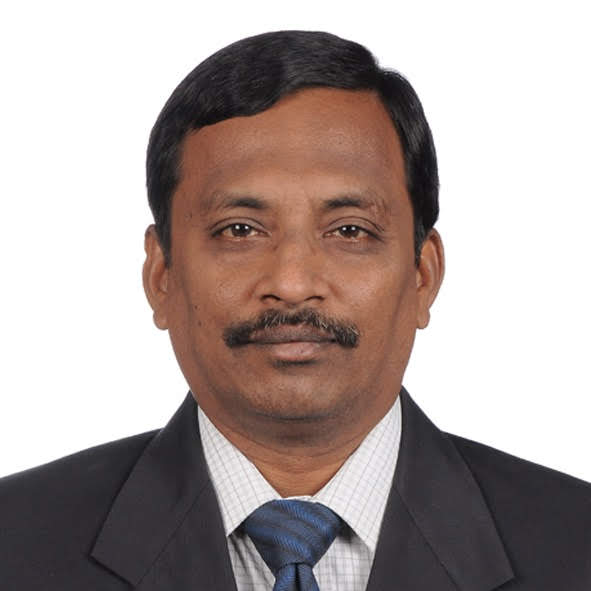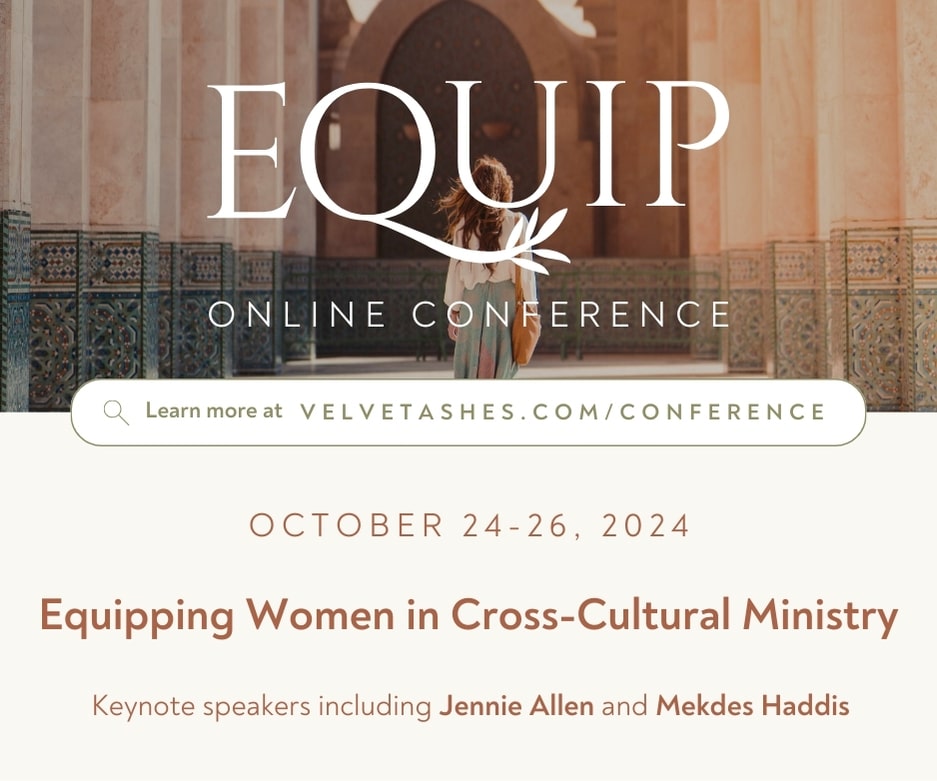EMQ » January – April 2024 » Volume 60 Issue 1

Summary: India is poised to play a significant role in global missions beyond its borders, and India’s diaspora will be a major part. Yet fully participating requires rethinking strategy and collaborating with global partners. This brings into view the necessity of Global North and Global South partners learning to work more closely as peers in global mission.
By Isac Soundararaja
“ … Our hope is that, as your faith continues to grow, our sphere of activity among you will greatly expand. Then we will be able to go and preach the good news in other places far beyond you…” (2 Corinthians 10:15, 16).
The above-mentioned verses from 2 Corinthians, by the Apostle Paul written to the Corinthian church was the foundation and prophetic words of God to Indian missions in late 70s when the indigenous missions movement emerged and facilitated a cross-cultural mission in India. The outpouring of the Holy Spirit upon the believers in the churches in South India and Northeast India in this era resulted in a mission wave at a time when Global North mission work was closing in India. Since the 1980s, missions in India has grown exponentially throughout the country.
Yet the world continues to change. And amid cultural, technological, geopolitical, and economic developments, it is now time to re-think and re-invent global missions. Today missions is everywhere being done by everyone. In this context, the partnership of Global North and Global South needs another look, especially the involvement of Indians.
According to Todd Johnson’s projection of global mission, only 18 percent of all Christians lived in the Global South in 1900, with 82 percent in the Global North. By 2020, two-thirds of all Christians were in the Global South, and only one third in the Global North. By 2050, the anticipation is 77 percent of all Christians will live in the Global South. Gina A Zurlo asserted that Indians will play a significant role in global mission in this decade.[i]
The Mega India
Missional Opportunities
India is bursting at its seams with a growing population of 1.43billion, now the most populated country in the world. What was once considered a disadvantage is now seen as a strategic human resource asset and a potential market for the world economy.
According to UNFPA 2023 report:
- 25% of the Indian population will be in the 0-14 years bracket.
- 18% of the Indian population will be in the 10-19 years bracket.
- 26% of the Indian population will be in the 10 – 26 years bracket.
- A little more than 50% of the Indian population are below the age of 26 years.
India has the world’s largest youth cohort with 254 million in 15–24 years bracket. Predominantly, 68% of the Indian population are within the 15–64 years bracket. Around 77 million are elderly people. The population of people aged above 60 years is increasing at a faster rate than the general population, which has doubled in only 25 years.[ii]
300 million middle class Indians lie in the influential, educated, opinion makers, global consumer sector. The rural population is moving to urban centers at an increasingly rapid rate. It is estimated that within the next two decades more than 50% of the Indian population will live in an urbanized context. Accelerated urbanization is already occurring in 310 plus cities.[iii]
There are about 53,000 minority institutions (mostly Christian educational institutions) in India. These include accredited universities and colleges, polytechnics, junior colleges, and professional training institutes.[iv]
Technology and knowledge management skills are also becoming more significant and progressing. India plays a significant role in tech manufacturing. It also retained the 40th position out of 132 economies in the Global Innovation Index (GII) 2023, reflecting a remarkable journey from its 81st rank in 2015 to this notable achievement. In 2021, India had 34% of total global graduates in science and engineering.[v]
India is the largest English-speaking population in the world today. 77.7% of the Indians are literate.[vi] Our film, television, radio, and print media reach out to almost every Indian in multiple languages. This is a big opportunity to inculcate gospel values, yet few Christians are involved in the secular media. Tentmakers are growing in the context of growing hostility to traditional missionary roles.
Missional Challenges
India is not without challenges. In 2023, 63% of Indians were in severe economic crisis. Environmental crises impacted 46% of the population. Sexual and reproductive health concerns and human rights concerns were concerns of 30%.[vii] Economic growth has been phenomenal, but the divide between rich and poor continues to increase. Natural disasters and terrorist attacks are rising. And religious conflicts are growing.
In missions, India’s traditional missions institutions focus more on remote tribal, marginalized and rural peoples within the country. Missions beyond our borders has not been a priority. More people are interested in exploring this, but few existing institutions facilitate doing it.
Within India, public opinion is growing hostile to Christian social work and conversions resulting in anti-conversion legislation. And while India’s government is technically secular, Christian ministries, evangelistic efforts, and missionaries experience constant attacks from it.
More geographic regions, people groups, linguistic groups, educational institutions like colleges are restricted to gospel work and proclamation, today. In the emerging socio-political situation in our country, going to a new place with the gospel worker or missionary identity is harder than it used to be. In some cases, going as a steward for gospel work may even put individual lives under threat. These difficulties force Indian’s Christian organizations to collaborate, but this is not always easy.[viii]
India’s own missionaries are growing old without support systems to care for them in their final years. And few young professionals are taking their places because mobilization and training in mission has been inadequate, and risks keep getting greater.
Financial challenges also abound. More restrictions on receiving foreign funds are being enacted. And while the young and growing middle class has tremendous potential to fill this gap, many are more interested in investing in consumer goods than missions.
The church in India also presents challenges to the growth of missions. Traditional and emerging churches and their institutions face challenges in nominalism, casteism, regionalism, nepotism, and corruption at different levels. While charismatic churches show growth, established denominations are declining. Still attrition overall among first-generation Christians remains high – about 30%. This is even higher in house churches – estimated to be between 40% and 60%.[ix]
Rural churches in India experience additional obstacles. Poverty, debt, and migration impact them internally. External pressures like persecution, social discrimination, and unfriendly laws and policies also create complex problems.
With all of these challenges, how can we fully participate in carrying the gospel of Jesus Christ to the millions who have never heard?
Rethinking Missions
India’s current realities require rethinking missions both in the country and beyond. Today’s difficulties fill the minds of missions and church leaders in the ministry within the country. Yet, the prophetic words of Todd Johnson and Gina Zurlo echo the significance of missions in the Global South and the strategic part that the Indian church and missions contributes to it.
A new chapter is emerging in Indian missions. Dialogue between the Global North and South will help to shape it. According to David Ro:
“Asia is now participating in global missions. In the 20th century, despite numerous religious and political challenges, growing nationalism and persecution, societal turmoil through urbanization and globalization, and the influences of secularism and materialism, Christianity in Asia has nevertheless grown twice as fast as the population, representing 8.2% of the population of 4.5 billion people. The Asian church is preparing for the challenge of global missions in this next century.”[x]
The three leading countries – Korea, China, and India – are already positioned in the global scenario in every aspect of development. It is more than the differentiating between developed and developing, rich and poor, or the North and South poles.
There are several areas in which we need to understand and build relationships with each other. We need more exposure to each other’s cultures, and greater appreciation and value for our dignity and service to one another. Sharing resources, expertise, and experiences through forums, consultations, workshops, research, work, and training is now glocal.[xi]
Mission Possible in India: Global Mission
Dr. K. Rajendren defines a paradigm shift as a change in concepts and practices. The change in concepts affects the normal way of doing things until the new paradigm becomes the normal way. Subtly, slowly, and constantly there are many changes in society. He urges missions to move toward globalization.[xii]
According to Bijoy Koshy, globalization is about economic and cultural imperialism – creating a new economic order and cultural ethos for profit motives.[xiii] It uses a policy of dividing the market and aims to dominate every segment by eliminating indigenous products and services. Christian missions has also had its share of division among denominational and doctrinal lines.
How could ministry change when the process of global economic integration is happening at the cost of regional political and social disintegration? God is raising a new consciousness for the next generation of the missionary enterprise to respond to this. As we enter the new era of globalization, will India show to the world the shape of new frontiers in missions? Will our next generation of Christian leaders in India, give shape to the post-modern missionary movement?
In the global context of change and movements, migrants and diasporas are key players setting a missiological trend for the global missions. According to John Amalraj, globalization is not limited to how the world influences and changes India but includes the other way, too.[xiv] Indian immigrants have changed the texture and idiom of their host societies.
It is said that Indian are all over the world – possibly in every country and nation. In fact, there are nearly 25 million Indians spread all over the globe. Indian communities control the politics and economies of several countries forming the backbone of their health services, construction industry, computer industry, scientific research, retail industry, financial trade, agriculture, bureaucracy, food industry, and much more.
Today the global Indian is often better educated and more skilled in intellectually competitive situations than members of other migrant communities. India is at the threshold of becoming a global player, and an economic, political, and, possibly, technological superpower. Yes, missions is possible for India in the global arena of reaching peoples of the world with the gospel of Jesus Christ.
And we need to send out Indian Christians as bearers of the good news not just within India but also beyond India. According to Dr. Yamamori, “65% of the world’s people live in countries that either partly or fully restrict traditional missionary approaches… and by the year 2000, these 74 to 84 countries are expected to contain… between 83% and 84 % of all those people who have yet to make a decision to follow Christ.”[xv]
But these countries are open for professionals, businesspeople, and students. An Indian tentmaker seeking employment, business, and study opportunities can enter these countries and serve these isolated and hidden people groups incarnating Christ and sharing the good news with them.[xvi] As the Western church faces decreasing missions participation, Macedonian calls for Indian Christians come from every part of the world.
Global Church and Global Mission
Enhancing partnerships globally can enable Indian missions as well as local indigenous missions everywhere in the world to participate more fully in global mission. This is not about a dividing the Global North and Global South, but facilitating partnerships for a global mission that takes the gospel of Jesus Christ to the ends of the world.
Every part of global church needs to prepare for global participation in Missio Dei beyond their own regions. That begins with observing, understanding, and appreciating the background and the culture of others. It can involve studying global cultural and geopolitical environments, and learning to be sensitive to community issues and needs in different nations.[xvii] It also means being open to the way people in different places do missions and follow the Spirit of God.
True partnership in global mission between the Global North and Global South will require making room for one another in communication, ideology, research, and missiology.
Communication
Healthy communication among globally diverse groups happens through the open dialogue that results from good relationships. Regular dialogue focused on listening and understanding is necessary to learn from each another, improve strategies, mutually support one another, and grow in our understanding of the Missio Dei.
Ideology
Our ideology is rooted in our political, cultural, and/or religious beliefs. As missionaries, our ideological framework for global missions is enhanced as we understand and experience the felt needs of different global contexts. Recognizing patterns of common felt needs can help provide clarity and unity to our ideologies.
National mission movements – such as COMIBAM, GEMA, NEMA, KWMA, IMA[xviii] – each offer a collaborative view of the missiological ideologies from their region. Joining the diverse perspectives of each of these national missions movements together can help global mission strategy to develop in a way that reflects a broad and global spectrum of ideologies.
Research
Understanding the global missions context requires careful research. Topics requiring regular examination include unreached people groups, least unreached people groups, missiological global trends, urban challenges, and media use. Missiological researchers working in both local and global contexts benefit from collaborating on research methodology, collation, and distribution. This cross-pollination of researchers provides a more complete picture of what God is doing worldwide. It can also help catalyze and encourage indigenous research movements.
Missiology
The post-modern world is enhanced with technological innovations and new economic patterns. This is moving us beyond the traditional colonial understanding of the poles (Global North and Global South).
Lalsangkima Pachuau explains, “The early Western missionary movement, aimed foremost at the saving of the souls from eternal damnation. Mission as expansion of Christendom through conversion and church growth was a dominant view during the Western colonial period. Then came the concept of Missio Dei, in which Christian mission was understood as Christian participation in God’s mission. But this was too broad: ‘If everything is mission, nothing is mission.’” Instead, he proposes using “witness across religious boundaries” as the defining principle of mission and as the integrating principle of missiology.[xix]
Charles E. Van Engen takes this further. He says, “Mission is constantly innovating. As contexts change, so, too, does the work of the church. Today, in the face of a rapidly changing world and a growing global church, the task of mission must continue to innovate in unexpected ways.”[xx]
Now is the time to re-think missions from a new theological perspective. Global North and Global South can share and appropriate strategies from each other. But to do that, deep learning and formation must occur to develop a reinvented global missiology.
This begins with examining the biblical principles of Missio Dei as they are understood across cultures. We must study indigenous mission and people group movements and their impact on cultures, faith, and nation building. Finally, investment in global mission collaboration across cultures and regions should be prioritized.
Conclusion
India is poised to take a major role in global mission. But for Global South countries, like India, to fully participate, global partnerships need to be prioritized and strengthened. New global, missiological partnerships can only emerge in a context of open minds and hearts to respect, accept, accommodate, and work towards fulfilling the Great Commission of Christ to the ends of the world (Acts 1:8). It is the time for us to re-unite as peers for this global mission. This interdependence will change our participation in the mission of God in our generation even beyond our regions.

Isac Soundararaja (generalsecretary@imaindia.org), PhD, serves with India Missions Association (IMA). He became a Christian when he was 19 years old. He has had various responsibilities in missions in India including serving as specialized faculty in cross-cultural communication, facilitating non-formal theological training for rural church planters, and working in member care initiatives.
[i] Gina Zurlo and Todd Johnson, eds., World Christian Encyclopedia, 3rd ed. (Edinburgh: Edinburgh University Press, 2019).
[ii] UNFPA State of World Population 2023, “8 Billion Lives, INFINITE POSSIBILITIES: The Case for Rights and Choices,” accessed September 1, 2023, https://www.unfpa.org/sites/default/files/swop23/SWOP2023-ENGLISH-230329-web.pdf.
[iii] Pandey, Bhartendu, Meredith Reba, P. K. Joshi, and Karen C. Seto. “Urbanization and Food Consumption in India.” Scientific Reports 10, no. 17241 (2020): Published October 14, 2020. https://www.nature.com/articles/s41598-020-73313-8.Top of Form
[iv] Rajesh Duthie, “Opportunities in Tentmaking in India and Abroad,” Indian Missions, April–June 2009.
[v] Press Information Bureau. “India’s Consistent Innovation Excellence: Retaining the 40th Position in Global Innovation Index 2023.” Press Release. September 29, 2023, 3:10 PM. PIB Delhi. https://pib.gov.in/PressReleaseIframePage.aspx?PRID=1961989.
[vi] Rana, Kadambari, “Why Educating Women Is More Important Than We Realize,” The Times of India, September 27, 2022, https://timesofindia.indiatimes.com/blogs/voices/why-educating-women-is-more-important-than-we-realize/.
[vii] United Nations Population Fund, “New Voices in the Population Debate,” UNFPA State of World Population 2023, https://www.unfpa.org/sites/default/files/swop23/SWOP2023%20YouGov%20Data%20supplement%200412.pdf.
[viii] OM India News. India Area Communique. July 1997.
[ix] Antony Samy, presentation at BAM South Asia Conference, Hyderabad, India, September 21, 2022.
[x] David Ro, Unpublished article sent to the author in July 2023.
[xi] Krishnasamy Rajendren, “New Leaders For Contemporary Missions,” unpublished article, IMA, 2006.
[xii] Krishnasamy Rajendren, “Paradigm Shift,” unpublished article, IMA, 2006.
[xiii] Bijoy Koshy, “Globalization and Colonization,” unpublished article, IMA, 2006.
[xiv] John Amalraj, “Survey Of A Changing World,” unpublished article, IMA, 2006
[xv] David J. Price, “The Tentmaker’s Mandate,” International Journal of Frontier Missions, Vol 14:3 (July-Sept.1997): 108.
[xvi] Analysis Developed During Discussions Within Interserve India Leadership Gatherings, Internal document, December 2005.
[xvii] Tom Sine, Mustard Seed vs. McWorld: Reinventing Life And Faith For The Future, (Grand Rapids, MI: Baker Publishing Group, 1999), 218.
[xviii] COMIBAM (Cooperación Misionera Iberoamericana), GEMA (Ghana Evangelical Missions Association), NEMA (Nigeria Evangelical Missions Association), KWMA (Korean World Missions Association), IMA (India Missions Association)
[xix] Lalsangkima Pachuau, “Missiology in a Pluralistic World,” International Review of Missions 89, no. 355 (March 25, 2009): 539-555, https://doi.org/10.1111/j.1758-6631.2000.tb00243.x.
[xx] Charles E. Van Engen, ed., The State of Missiology Today: Global Innovations in Christian Witness (Downers Grove, IL: IVP Academic, 2016).
EMQ, Volume 60, Issue 1. Copyright © 2024 by Missio Nexus. All rights reserved. Not to be reproduced or copied in any form without written permission from Missio Nexus. Email: EMQ@MissioNexus.org.






Responses